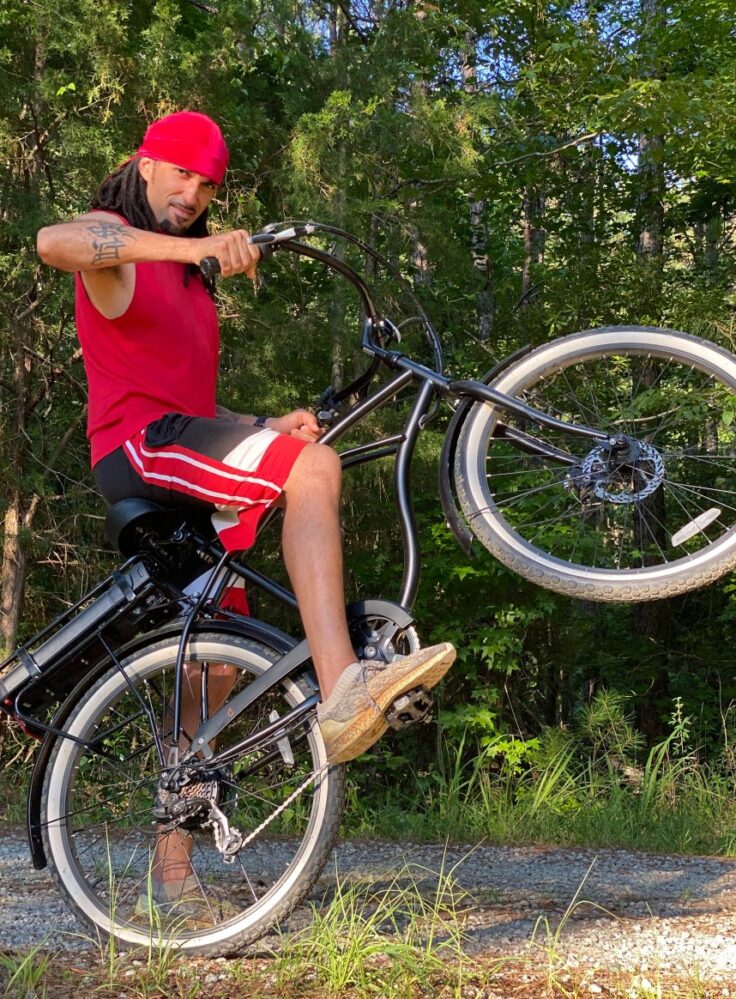Understanding Electric Bike Laws in Texas
Navigating the rules around electric bikes in Texas can be a bit tricky, especially if you’re just starting out. The state has taken steps to keep up with the growing trend of electric bikes by establishing guidelines to promote safety and accessibility. Electric bikes are categorized differently from regular bicycles and cars which adds to the complexity of grasping the regulations.
Basically, Texas has a system for categorizing electric bikes into three classes.
- Class 1: Electric bikes that assist the rider only when pedaling and stop assisting at speeds of 20 mph.
- Class 2: Electric bikes equipped with a throttle that can propel the bike without pedaling, with a speed limit of 20 mph.
- Class 3: Electric bikes that assist only when pedaling, with the assistance cutting off at speeds of 28 mph.
Grasping these categories is crucial to comply with regional laws since distinct regulations pertain to each group. For example Class 3 bicycles are prohibited on specific bike trails that may differ based on the town. Its important to highlight that the precise guidelines can vary between cities, reflecting community issues and preferences.
Types of Electric Bikes and Their Classifications
Electric bicycles come in different varieties, each designed to cater to specific requirements and tastes. The classification system used in Texas assists in grouping these bikes based on their characteristics simplifying the process of enforcing the applicable regulations.
Class 1 Electric Bikes: These are ideal for those who prefer a traditional biking experience with added power. They provide a boost only when pedaling, making them suitable for bike paths and trails where motor assistance is needed but not overwhelming.
Class 2 Electric Bikes: These bikes are often favored for their convenience, as they come with a throttle allowing the rider to control the bike’s speed without pedaling. They are popular among commuters who want a quick and easy ride without the physical exertion.
Class 3 Electric Bikes: Designed for faster speeds, Class 3 bikes are great for those who need to travel longer distances quickly. However, their use is more restricted compared to Class 1 and 2, especially on bike paths and trails.
Every type has its benefits and picking the one that suits your riding style and requirements is crucial. I recall a friend opting for a Class 2 bike to make his daily commute smoother. He found the throttle function handy for navigating through traffic more effectively.
Legal Requirements for Riding Electric Bikes
To ride an bike in Texas you need to follow certain legal guidelines for safety and compliance. The rules may differ based on the classification of the bike and the location where you ride.
Here are some of the key legal requirements:
- Helmet Use: For Class 3 bikes, riders under 18 must wear a helmet. While helmets are recommended for all electric bike riders, the law mandates it for younger riders on Class 3 bikes.
- Age Restrictions: Riders of Class 3 electric bikes must be at least 15 years old. Younger riders are restricted to Class 1 and 2 bikes, and they must be accompanied by an adult if riding on public roads.
- Bike Paths: Class 1 and 2 electric bikes can generally be ridden on bike paths and lanes, but Class 3 bikes face restrictions and may not be allowed on certain paths or trails. Local jurisdictions may impose additional rules, so it’s crucial to check local regulations.
- Vehicle Registration and Insurance: Unlike motor vehicles, electric bikes do not need to be registered or insured in Texas. However, it’s always a good idea to have personal insurance for protection in case of accidents.
Based on what I ve seen being aware of these rules can help prevent surprises and make your ride more enjoyable. For example if you know that helmets are required for younger riders on Class 3 bikes it can save you from getting fined and also keep young riders safer.
Helmet and Safety Gear Regulations
In Texas there are laws regarding helmets and safety gear for electric bike riders to keep them safe and enhance their riding experience. The specific rules may differ based on the kind of electric bike you use and your age.
To protect younger riders on Class 3 electric bikes those below 18 are required to wear helmets. This rule is designed to ensure the safety of riders who might not possess the same level of experience or decision making skills as adults. It’s a straightforward precaution that can greatly minimize the chances of injury, during an accident.
While helmets are required for kids, it’s a good idea for all ages to strap one on. When I took my electric bike for a spin I wasn’t convinced that wearing a helmet was necessary. However after a small spill that could have turned out badly I quickly realized how crucial safety gear is.
Along with helmets using safety equipment such as gloves, knee pads and elbow pads can be beneficial. Although they arent mandatory by law these accessories offer added safety particularly when dealing with traffic or challenging landscapes. Its wise to err on the side of caution and be more prepared than less so.
Here’s a brief overview of the important rules and guidelines.
- Under 18: Must wear a helmet on Class 3 electric bikes.
- All Riders: While not legally required, helmets are highly recommended for safety.
- Additional Gear: Consider wearing gloves and pads for extra protection.
Where You Can Ride Electric Bikes
It’s important to know where you can ride your bike if you want to fully enjoy the freedom it brings while also staying within the law. Texas law sets out guidelines but individual cities and towns may have their own rules about where electric bikes can go.
When it comes to Class 1 and 2 electric bikes you can typically use bike paths, lanes and shared trails. These types of bikes are similar to regular bicycles which is why they are allowed in these places. However it’s wise to look up the regulations in your area since some locations may have particular rules regarding access.
On the hand Class 3 e bikes have to deal with more limitations. They usually cant be used on bike paths and trails that ban motorized vehicles. For example in Austin Class 3 bikes are not permitted on specific trails. This restriction may feel somewhat confining but it plays a role in ensuring these paths remain secure for regular cyclists and walkers.
I remember a weekend outing with friends when we accidentally brought our Class 3 bike onto a trail that prohibited it. It was somewhat embarrassing and we had to retrace our steps. Being aware of the regulations can spare you from inconveniences like that and enhance your overall riding experience.
Here’s a summary:
- Class 1 and 2: Typically allowed on bike paths and multi-use trails.
- Class 3: Restrictions apply, often not allowed on certain bike paths and trails.
- Local Rules: Always check for specific local regulations.
Insurance and Registration for Electric Bikes
One advantage of using bikes in Texas is that they dont need to be registered or insured like cars do. This can bring peace of mind to riders who enjoy the ease of owning an electric bike. Nevertheless it is wise to think about getting insurance for extra security.
You don’t have to register electric bikes, no matter what class they belong to. This makes it simpler to hit the road on your bike without dealing with the red tape involved in registering a car or motorcycle. That being said it’s wise to take care of your bike and make sure it meets safety requirements.
When it comes to insurance Texas law doesn’t require electric bike riders to have coverage. However it can be wise to consider personal liability insurance. This type of insurance can help with potential damages or injuries in the event of an accident. I remember a friend of mine who had a mishap and ended up paying some expenses himself. Ever since that incident he makes sure to have his bike insured with a personal plan.
In summary:
- Registration: Not required for electric bikes in Texas.
- Insurance: Not legally required but recommended for personal protection.
- Maintenance: Keep your bike in good condition and adhere to safety standards.
Penalties for Violating Electric Bike Laws
Grasping the consequences of breaching e bike regulations in Texas is essential to steer clear of legal issues and have a secure riding experience. Although e bikes offer a convenient way to get around failing to adhere to the guidelines can result in penalties and other outcomes.
Riding a Class 3 e bike without a helmet if youre under 18 could land you with fines. Different areas may also fine you for riding in places or on paths where Class 3 bikes are prohibited. For example in certain Texas cities you might get ticketed for riding a Class 3 bike on a trail designated solely for pedestrians or regular cyclists.
I remember a tale about a buddy of mine who was stopped by the cops for riding his Class 3 motorcycle on a trail where it wasn’t allowed. The penalty wasn’t steep but it served as a wake up call about the importance of knowing and following the rules.
Apart from facing penalties for violations, facing consequences can have more serious repercussions. For example if you receive several citations you may face limitations on where you can use your electric bike or in extreme situations your bike could be impounded.
Here’s a brief summary of possible consequences:
- Fines: For riding without a helmet (for under 18s) or in restricted areas.
- Repeated Violations: May lead to increased fines or additional restrictions.
- Impoundment: In severe cases, frequent violators may face bike impoundment.
Recent Changes and Updates to Electric Bike Laws
In Texas the laws regarding electric bikes have changed over time to keep up with the increasing popularity of these vehicles and to address new safety issues. Its important for all electric bike riders to stay informed about these updates.
Texas has recently updated its rules regarding electric bikes. One significant change is the clarification of the usage areas for Class 3 electric bikes. This update aims to avoid conflicts, between different road users and enhance safety on shared paths.
In addition there has been an increased acceptance of electric bikes on different trails and pathways as long as they adhere to certain rules. This shift highlights the increasing acknowledgment of electric bikes being a practical and eco friendly means of getting around.
Based on my experience these updates can be really helpful. I recall that adding more routes for bikes made my daily journey easier and more pleasant. Nevertheless staying informed about these changes is essential to prevent unintentionally violating the law.
Summary of recent updates:
- Class 3 Regulations: More defined guidelines on where they can be ridden.
- Trail Access: Expanded access for electric bikes on various trails.
- Local Ordinances: Check local regulations for specific updates.
Frequently Asked Questions
The rules regarding bikes can be a bit perplexing and riders often have queries about them. To shed light on matters here are responses to some commonly asked questions that may provide you with clarity.
- Do I need to register my electric bike in Texas? No, electric bikes do not need to be registered in Texas. However, it’s essential to keep your bike in good working condition and comply with local regulations.
- Are there any age restrictions for riding electric bikes? Yes, riders of Class 3 electric bikes must be at least 15 years old. Younger riders can use Class 1 and 2 bikes, provided they follow the safety rules.
- What type of helmet is required? For Class 3 bikes, riders under 18 must wear a helmet. While it’s not mandatory for older riders, wearing a helmet is highly recommended for safety.
- Can I use my electric bike on any trail? Not necessarily. Class 1 and 2 bikes are usually allowed on bike paths and trails, but Class 3 bikes may face restrictions. Always check local ordinances to ensure you’re riding in permitted areas.
- What should I do if I receive a fine for violating electric bike laws? If you receive a fine, make sure to understand the violation and pay the fine promptly. Repeated violations can lead to more severe consequences, so it’s best to comply with the regulations to avoid further issues.
Conclusion
To have a smooth and trouble free riding experience in Texas it’s crucial to understand the laws governing electric bikes. This includes knowing the various types of electric bikes the rules on where you can ride and the significance of wearing safety gear. Being well informed about these aspects ensures that your rides are not only enjoyable but also in compliance with the law.
Having gone through these laws I understand the significance of being mindful of the regulations and any updates. It’s easy to miss the nuances but investing some effort in grasping the rules can save you from unnecessary penalties and hassles. Whether you’re an experienced cyclist or a beginner staying informed about the latest changes and following the rules will enhance your biking journey.
Keep in mind that using an e bike is all about relishing the ride and embracing the freedom it brings. By adhering to regulations and placing safety at the forefront you can enhance your biking experiences while also fostering a safer and more pleasant atmosphere for everyone.


